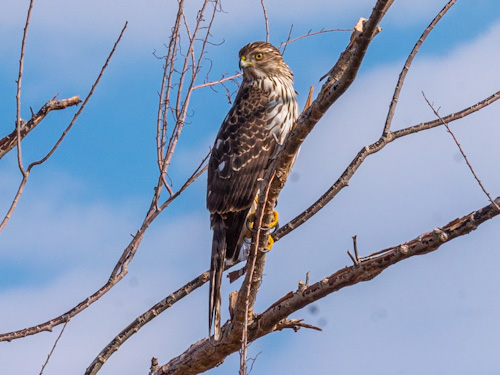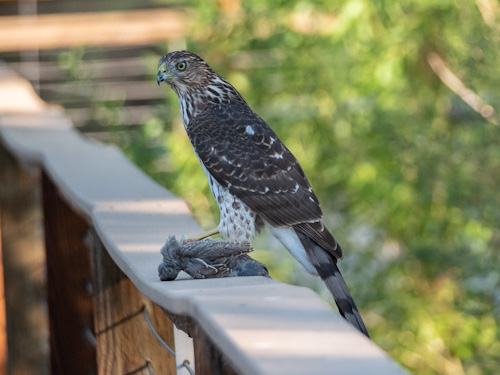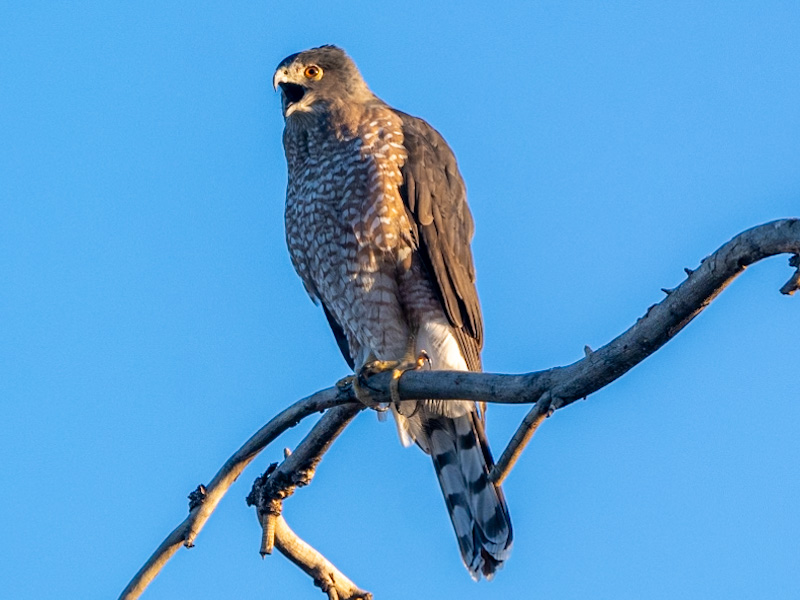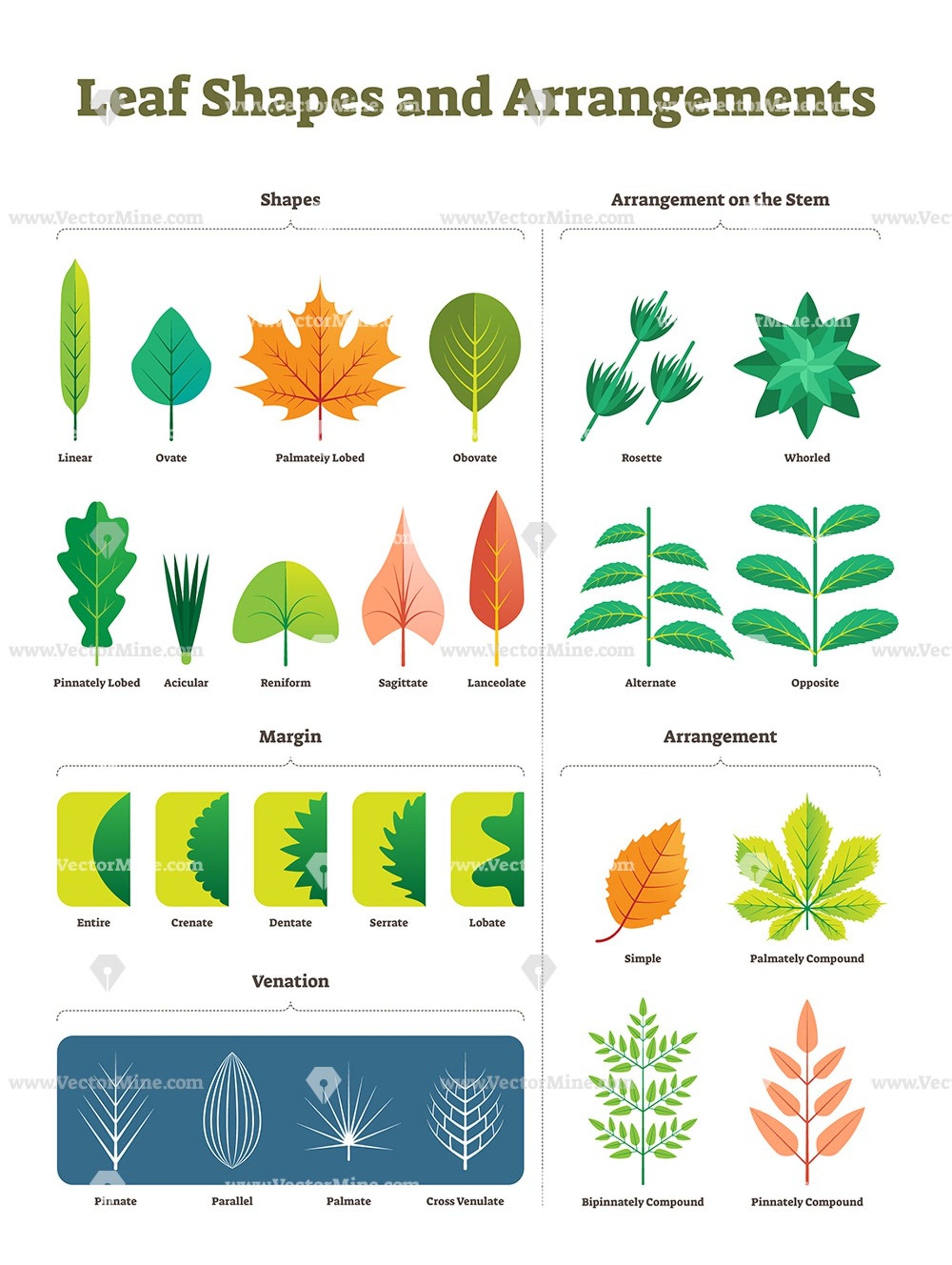
Adult Coooper's Hawk
The head of a Coopers hawk is incredibly flexible, allowing it to look completely backward.

Adult Cooper's Hawk
Adults have blue-gray upperparts and white underparts with rufous barring. Their tails have a series of alternating dark- and light-gray bands and a white tip. Adults also have dark crowns that contrast with their lighter-colored napes, and have yellow irises that darken with age, first to orange, and then to red in older adults.

Cooper's Hawk Diet
Songbirds and gamebirds are the main types of avian prey consumed, and rodents are the most frequently taken mammals. In addition to mammals and birds, Cooper’s Hawks also take reptiles, amphibians, fish, and insects.

Juvenile Cooper's Hawk
Juveniles have brown upperparts, and cream-colored underparts with reddish-brown streaks on their breast and belly.







